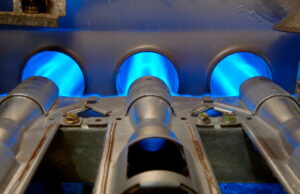Your gas furnace is a vital component of your home’s heating system, providing warmth and comfort during the colder months. However, ensuring that your gas furnace operates safely is paramount to protecting your family and property. In this guide, we’ll explore essential maintenance tips, signs indicating you may need gas furnace repair, and DIY safety checks every homeowner should know.
Understanding Gas Furnaces
Gas furnaces utilize natural gas or propane to generate heat, which is then distributed throughout your home via ductwork. While efficient and effective, gas furnaces pose certain safety risks, primarily due to the combustion process involved in heating your home. These risks include gas leaks, carbon monoxide poisoning, and fire hazards.
Regular Maintenance Tips
- Schedule Annual Professional Inspections: Scheduling maintenance with our team to inspect your gas furnace annually is crucial for identifying potential safety issues early on. We’ll clean components, check for leaks, and ensure your furnace operates at peak efficiency.
- Replace Air Filters Regularly: Dirty air filters can restrict airflow, leading to overheating and potential safety hazards. Replace filters every 1-3 months, depending on usage and filter type.
- Keep Vents and Flues Clear: Ensure that vents and flues are free from obstruction to prevent carbon monoxide buildup and ensure proper ventilation.
- Check for Gas Leaks: Perform regular visual inspections for signs of gas leaks, such as hissing sounds, the smell of gas, or dead vegetation near gas lines.
- Clean the Furnace Area: Keep the area around your furnace clean and free from clutter to reduce fire hazards and ensure proper airflow.
DIY Safety Checks
- Inspecting Pilot Light: Ensure the pilot light is consistently lit and burns blue. A flickering or yellow flame may indicate a ventilation problem or carbon monoxide buildup.
- Checking for Visible Cracks or Damage: Inspect your furnace for any visible cracks, corrosion, or other damage that may compromise its safety or efficiency.
- Testing Carbon Monoxide Detectors: Regularly test and replace batteries in carbon monoxide detectors to ensure they are functioning properly.
- Ensuring Proper Ventilation: Ensure that vents and flues are clear and unobstructed to prevent carbon monoxide buildup and ensure proper airflow.
Additional Safety Measures
In addition to regular maintenance and inspections, there are several additional safety measures homeowners should take:
- Installing Carbon Monoxide Detectors: Place carbon monoxide detectors on every level of your home and near sleeping areas to alert you to any potential leaks.
- Having a Fire Extinguisher Nearby: Keep a fire extinguisher in an easily accessible location near your furnace and learn how to use it effectively.
- Educating Family Members: Ensure all family members are aware of gas furnace safety protocols, including what to do in the event of a gas leak or carbon monoxide alarm.
Maintaining a safe gas furnace is essential for protecting your home and family from potential safety hazards. Remember, when it comes to gas furnace safety, vigilance and proactive maintenance are key.
Serving Staten Island’s Heating and A/C needs since 1955. Contact the Bob Mims team to schedule an appointment for gas furnace repair in Staten Island, NY today!


